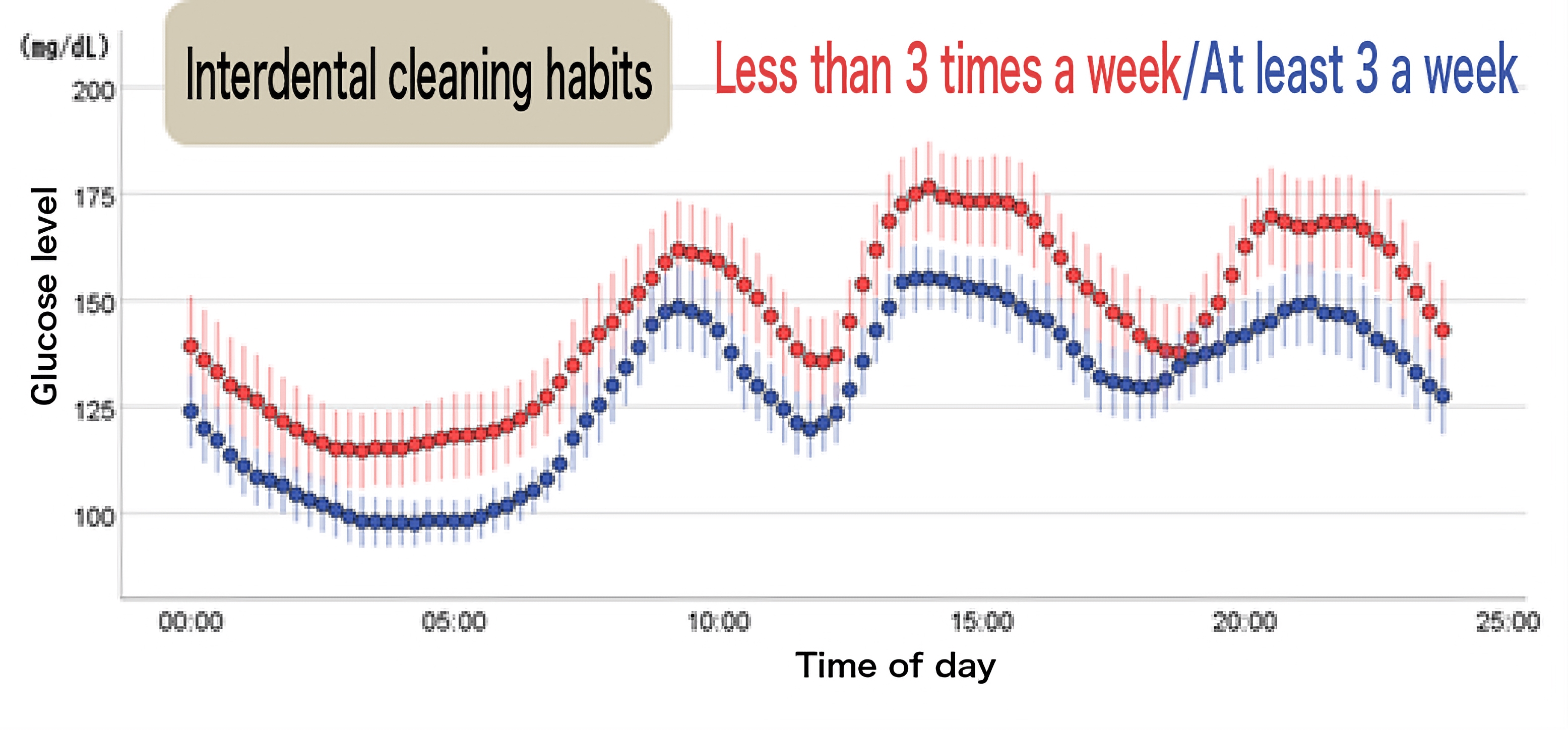• Type 2 diabetes patients with good oral hygiene habits such as interdental cleaning show lower blood glucose levels over 24 hours
• ‘The relationship between interdental cleaning habits and 24-hour blood glucose fluctuations in type 2 diabetes patients’ cross-sectional study also indicates that prevention of tooth loss is important for people with type 2 diabetes
A new cross-sectional study investigating oral hygiene habits and blood glycemic control indicators has found compelling evidence that good oral care habits such as interdental cleaning in people with type 2 diabetes are associated with better glycaemic control.
Highlighting the importance of the connection between interdental cleaning and blood glucose levels, the results also indicate that prevention of tooth loss through good oral care habits and regular dental visits are important for people with type 2 diabetes from the perspective of better blood glycaemic control.
The joint study by the Clinic Masae Minami/Minami Diabetes Clinical Research Center and international oral healthcare company Sunstar investigated oral hygiene indicators and blood glycaemic control indicators, such as 24-hour continuous blood sugar fluctuations.
This study confirms the relationship between blood sugar fluctuations and the number of teeth in people with diabetes. The results also make it clear that interdental cleaning habits and the number of teeth are related not only to measurements such as HbA1c and fasting blood sugar levels, but also to Time in Range, a figure that shows the amount of time a patient spends in the target blood glucose range between 70-180mg/dL during a 24-hour blood-sugar measurement.
That diabetes and periodontal disease are closely related was again demonstrated in a high-impact study a few years ago, showing that treating periodontal disease in patients with type 2 diabetes improved glycaemic control.
Although there have been few reports on the relationship between oral hygiene habits and blood sugar control in diabetic patients, a previous study, which used the same study population as the present study, clarified the association between interdental cleaning habits, gender- and age-adjusted HbA1c, and fasting blood sugar levels.

Key research results
1. Single correlation between parameters (Spearman's ρ)
The number of teeth was negatively correlated with age, the frequency of dental visits was positively correlated with age, and BMI, HbA1c, and fasting blood glucose level were negatively correlated. Frequency of teeth brushing showed a negative correlation with male gender, BMI, urinary albumin/creatinine ratio, high-sensitivity CRP, and TNF-α. The frequency of interdental cleaning was positively correlated with time in range with male gender, BMI, high-sensitivity CRP, IL-6, and TNF-α.
* Negative correlation is a relationship where the larger one value is, the smaller the other value is.
2. Comparison of glycaemic control and the variation indicator between the groups by oral hygiene conditions
Groups were divided according to whether or not they had interdental cleaning habits of at least three times per week, and large differences were seen when average glucose levels over 24 hours were plotted and compared (Figure 2-①). Similar results were also obtained in comparison between the group with or without at least 20 teeth (Figure 2-②).
In comparison between groups for glycaemic indicators calculated from continuous glucose monitors CGM data, the group that had an interdental cleaning habit of at least three times per week had significantly lower total mean glucose levels than the group that did not, and Time in Range was higher. Similarly, the group with at least 20 teeth had lower average glucose levels than the group that did not, and the Time in Range was higher.
3. Analysis of the relationship between Time in Range and Interdental Cleaning Habits considering other factors (logistic regression model)
When the Time-in-Range goal of 70% was achieved/not achieved was used as the dependent variable and corrected for gender, age, and BMI, interdental cleaning habits (at least three times a week) became a significant independent variable. Similar results were obtained in models in which inflammation-related indices were added as adjustment factors, suggesting that there is a mechanism mediated by factors other than inflammation.
Research background and purpose
In recent years, CGM devices that continuously record glucose fluctuations day and night by a sensor attached to the arm, have been approved and used in the treatment of diabetes. CGM can be used to reveal hyperglycemia, hypoglycemia, and a range of sugar fluctuations that was not possible with HbA1c or self-monitoring of blood sugar. Time in Range (which is the percentage of time that glucose level measured by CGM between 70-180 mg/dL) is attracting attention as an indicator of the "quality" of blood glucose fluctuations, as reporting has increased, indicating that Time in Range is associated with the onset/progression of complications and mortality. This new study aimed not to only examine the relationship between oral hygiene habits and glycemic control indicators, such as Time in Range, but also the involvement of inflammation as the mechanism of action.
Sunstar has been promoting and supporting research into diabetes for over 30 years driven by the personal story of the founding family of Sunstar. The company’s founder, Kunio Kaneda, suffered from diabetes and eventually lost his long-term battle with it at a relatively young age. Since then, Sunstar has focused on the relationship between diabetes and periodontal disease and is engaged in research, new product development and awareness in collaboration with universities and medical institutions.
Study methodology
The cross-sectional study involved 104 type 2 diabetes patients with 15 or more natural teeth attending clinics. Survey questions included the number of teeth, number of times teeth are brushed per day, frequency of interdental cleaning using dental floss and interdental brushes, and frequency of dental visits. Blood and urine were tested for HbA1c, fasting blood sugar, insulin, high-sensitivity CRP, IL-6, TNF-α, MCP-1, urinary albumin/creatinine ratio. Additionally, glycaemic variability indicators were considered for CGM. BMI data was also added to the analysis.
The results of this study were presented at the 66th Annual Scientific Meeting of the Japan Diabetes Society in May 2023.







